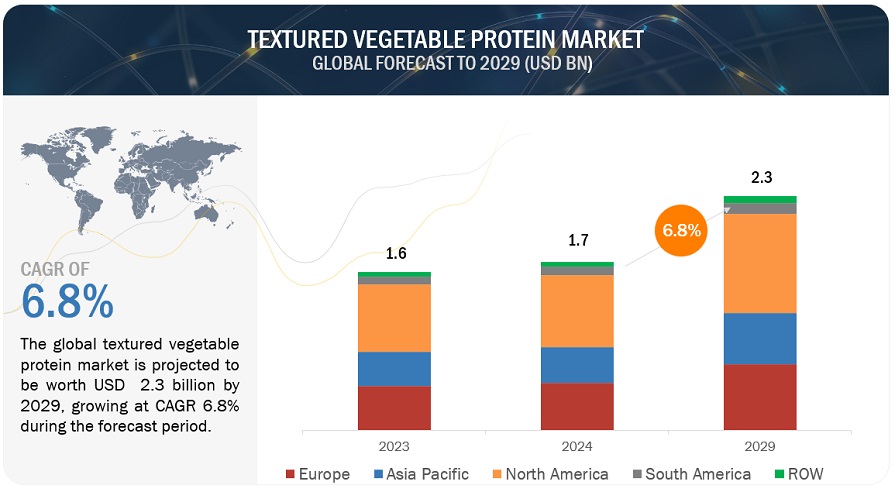Textured Vegetable Protein is in Demand Due to Growing Adaption of Meat Alternatives Among Consumers
The Textured Vegetable Protein Market is estimated to be valued at USD 1.1 billion in 2020 and is projected to reach USD 1.5 billion by 2025, recording a CAGR of 6.2%, in terms of value.
The growing demand for meat alternatives, as well as the increase in health awareness among consumers, are propelling the demand for textured vegetable protein. With the advancement of new technologies and innovative experiments in the food and beverage sector, the usage of textured vegetable protein has been dominant in the North American market, due to rise in vegan and flexitarian population, whereas the Asia Pacific region is growing fastest owing to new technologies and increase in the export of food and beverages.
Textured vegetable protein obtained from various sources such as soy, wheat, and pea has been adaptive among the food manufacturers, as it poses as a meat alternative with functional and nutritional characteristics. Also, it has witnessed high rates of adoption among consumers, as it replicates the characteristics of meat products, such as sausages, burger patties, nuggets, and crumbles, with a similar texture and flavor. Meat alternatives contain protein from plants and are formulated to providing an option for non-meat consumers. Flexitarians have been actively working to reduce meat consumption in their diets and are emerging as a larger potential consumer segment. This has increased the production of meat alternatives that closely match the consumer eating experience of beef, chicken, and other animal-based products.
Beyond Meat (US) has been working to bring down the price of its meat substitute products, currently made primarily with wheat and pea proteins, by shifting toward including less expensive ingredients such as lupin and sunflower seeds. On the manufacturing side, vegan brand Rebellyous Foods (US) aims to reduce the price of all plant-based meat products with its high-capacity production methods, which it uses to make its meat alternatives and plans to offer their license to other manufacturers by help them produce economical animal-free food products.

Comments
Post a Comment